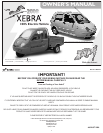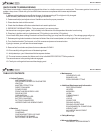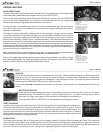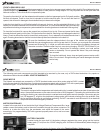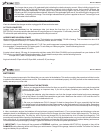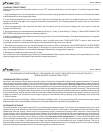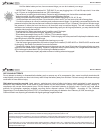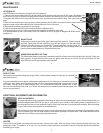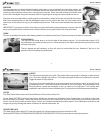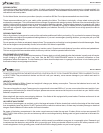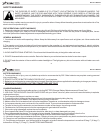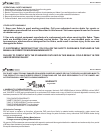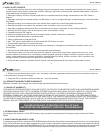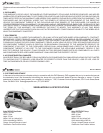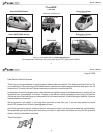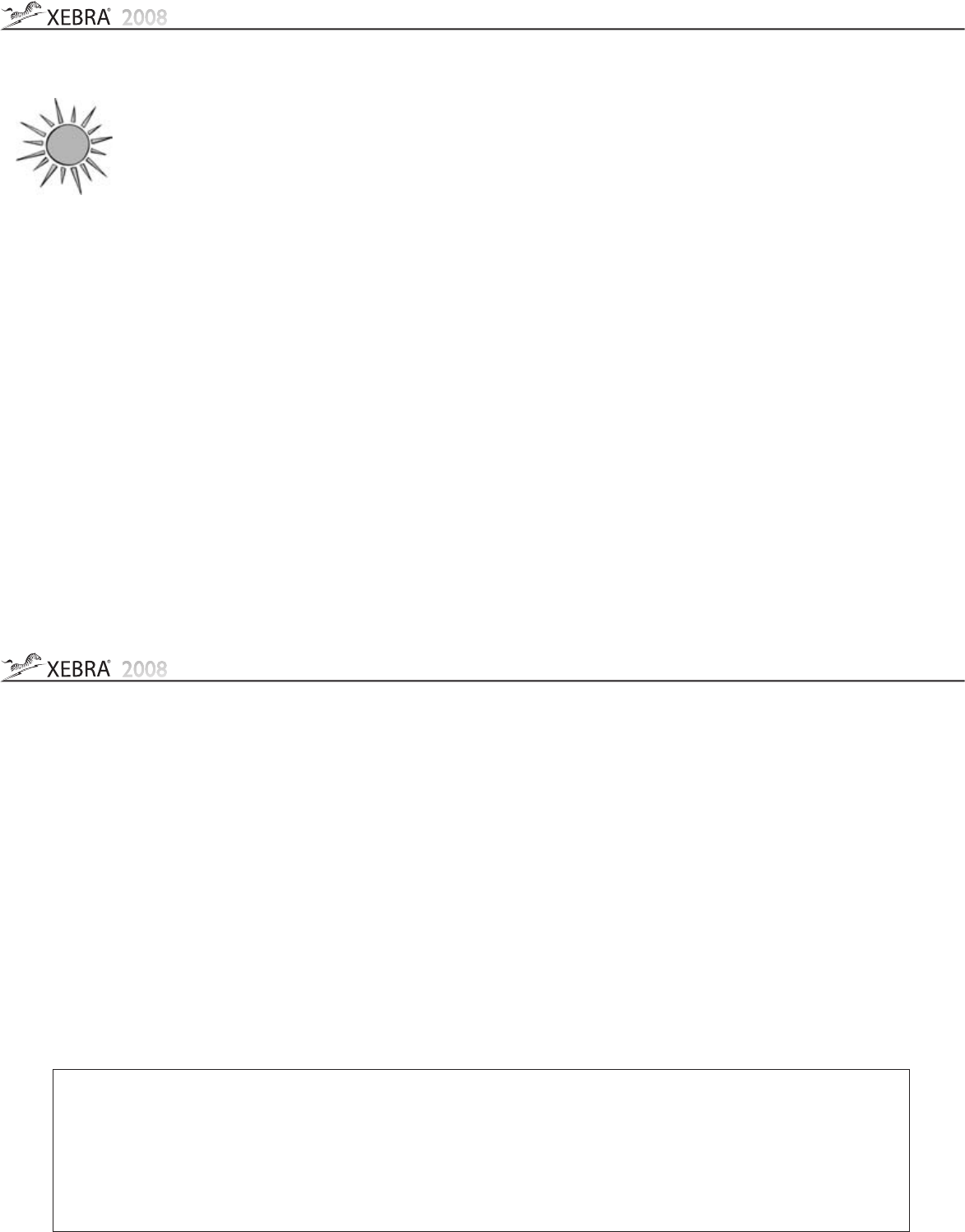
*IMPORTANT:Chargeyourbatteries ALL THEWAY!Ifyouarepluggingintoa110volt20ampcircuit,itcantake
upto12hourstochargebatteriesthatare100%discharged.
* Take off slowly, avoidingjack-rabbit starts. Pretend anegg is between your footand the accelerator pedal.
* Addsolar panels- this will increaseyour Xebra's range andbattery lifetime.
* Keep your speed slow andsteady.Aconstant 30mph is better than going20, 30, 40, 30,etc.
* Anticipate stops andcoast into them. Since thereis no idle inan EV, you can save quitea bit of energyhere.
* Correct tire pressure is critical to maintain good performance and range. It is generally recommended that the tire
pressure be kept at the tire manufacturer's maximum rated pressure of 51 psi. However, if the ride is a little too rough,
the pressure in either the front tire alone or all three tires may be reduced slightly. This will increase the rolling
resistance and reduce the range somewhat, but depending upon your driving requirements, you may decide that the
smoother ride isworth the trade off.
* Avoid steep hills.Take a morelevel route if possible, evenif it is longer.
* Limit the use of allother electrical items, especially yourheater.
* Eliminate excess weight from yourEV (-100 lbs =2% increase in range).
* Keep your Xebra garaged during cold weather. Trickle charging with solar panels will help keep the batteries warm,
permitting them tohold their charge longer.
* Be sure your batteries arefully charged before leaving onyour trip.
* Use the correct gauge extension cord and not longer than needed (12 AWG-#12/3 or 10AWG-#10/3 must be used
for charging). SeePower Cord section for moreinformation.
* Opportunity charge, that is charge wherever and whenever you can (even 30 minutes of charging will give you more
miles than the mathematics suggest). However, remember that for optimal battery life, charge before the battery is
50% discharged asdescribed in the Conditioning theBatteries section.
* Be sure your brakes areproperly adjusted and are notrubbing when not engaged.
13
Owner’sManual
Untilthebetterbatteryarrives,herearesomethingsyoucandotoextendyourrange.
RECYCLING BATTERIES
Do not attempt to destroy or disassemble the battery pack or remove any of its components. Also, never touch both terminals with
metal objects or body parts as a short circuit may result. Keep the battery away from children. Failure to comply with these warnings
could result infire or serious injury.
Lead, mercury, cadmium and a host of other toxic heavy metals contained in most consumer
electronics and batteries pose a real threat to public health and the environment. Recycle your batteries properly, keeping in
compliance with current environmental laws. Do Not dispose of lead-acid batteries in ordinary trash. Consult your local waste
authority for information regarding available recycling and/or disposal options. CALIFORNIA: According to The California
Department ofToxic Substances Control (DTSC), itis mandatory to recycleyour batteries.As of February9, 2006, according to
California State Law,disposing of batteries withregular garbage is against thelaw!
Old batteries must be recycled.
14
Owner’sManual
If you believe that your vehicle has a defect which could cause a crash or could cause injury or death, you should immediately inform the National
HighwayTraffic safetyAdministration (NHTSA)inadditionto notifyingQingqiGroup MotorcycleCo.LTD.
If NHTSAreceivessimilar complaints, itmay open aninvestigation, and ifit finds thata safety defectexists in agroup of vehicles,it may ordera recall
and remedycampaign. However, NHTSAcannot becomeinvolved in individualproblems betweenyou, your dealer, or
To contact NHTSA, you may call the Vehicle Safety Hotline toll-free at 1-888-327-4236 (TTY: 1-800-424-9153); go to http://www.safercar.gov ; or
write to: Administrator, NHTSA, 400 Seventh Street, SW., Washington DC 20590. You can also obtain other information about motor vehicle safety
fromhttp://www.safercar.gov.
Qingqi GroupMotorcycle Co.
LTD.



